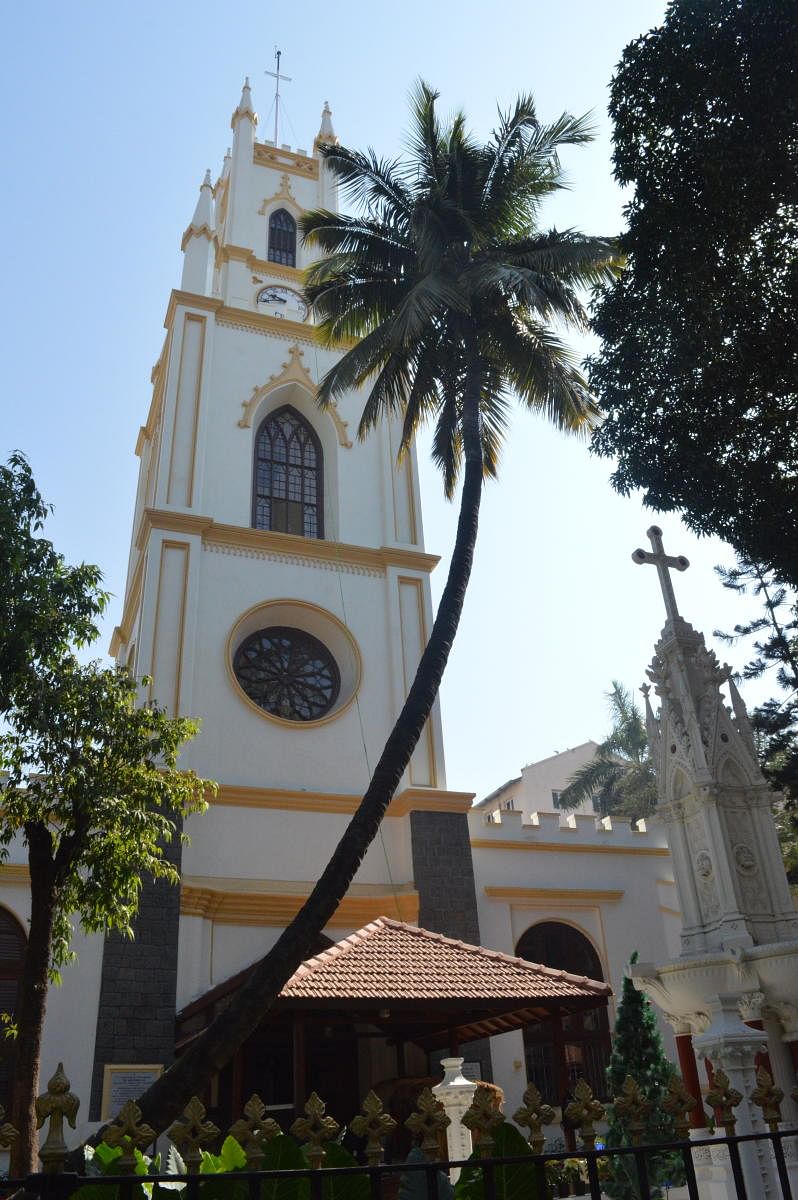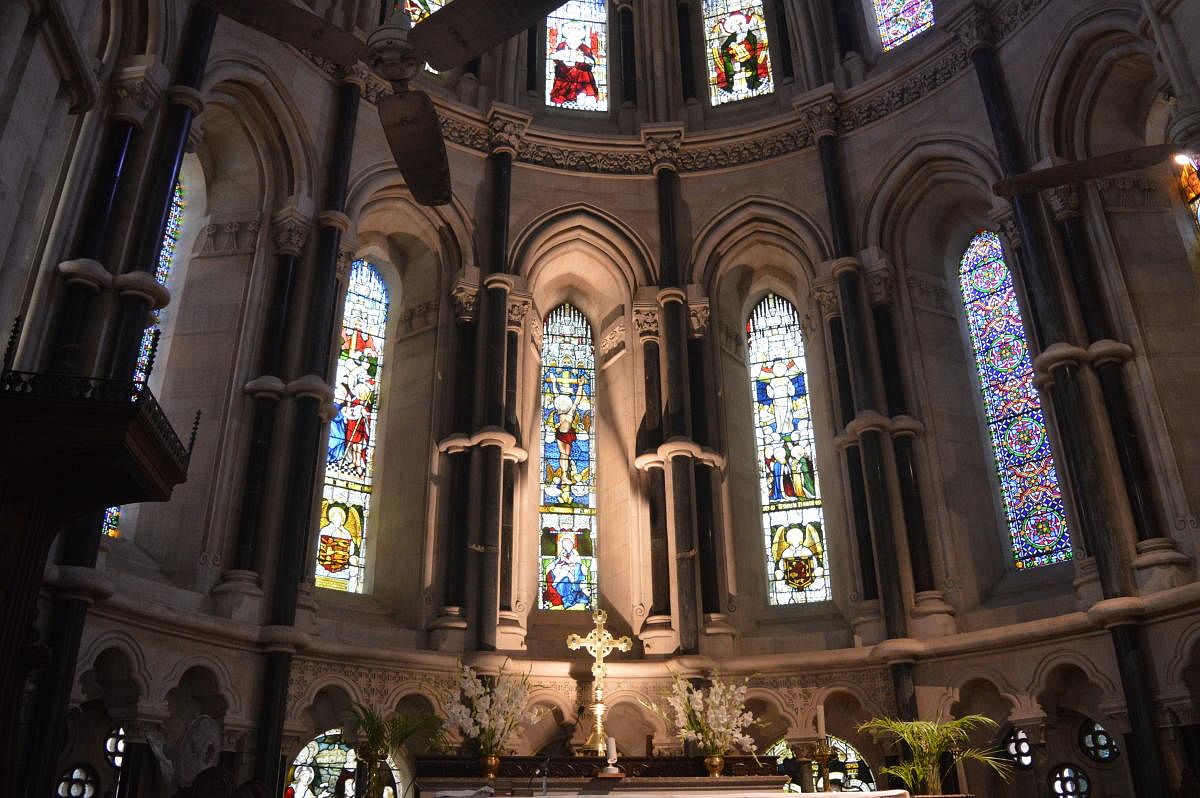

It’s 300 years old — the St Thomas Cathedral in Mumbai; and it’s both a celebration and a commemorative time for the cathedral and its members.
Three hundred years ago, Bombay as we know today began from here. It was the southernmost tip of the city, which today is the metropolis. Later on, a lot of land was added beyond this point on the southern side as hundreds of acres were reclaimed from the Arabian Sea. The milestone ‘Point Zero’ is still here, and over the years, 16 other milestones have been installed on the northern side, taking the road up to the present suburbs like Bandra, Andheri, Juhu etc.
Thomas Carr, between 1836 and 1851.
This cathedral, located in front of the famous Tata House or Bombay House, close to the exquisitely sculpted Flora Fountain in the vicinity of the Bombay Stock Exchange or the money centre of India, has many stories to tell.
In fact, the entire history of Mumbai can be traced using the cathedral, and many landmarks, especially in the posh South Mumbai like Churchgate station and Dalal Street have been named courtesy the cathedral.
How’s that?
“Every birth, death, marriage and baptism of the Anglican people recorded in the whole of Bombay Presidency region, which included the entire Maharashtra, Goa, Karnataka, Gujarat and some parts of Sindh (Pakistan), are found in our records. If any member of our cathedral wants to trace his or her family history of 300 years, they can do it easily,” explains the jovial Reverend Avinash Rangayya, who currently leads the congregation here.
Taking us on a tour of the cathedral, he adds, “I am no historian. I will just narrate what, over the years, we have gathered about the people associated with our cathedral, and about the plaques and tombstones present, and also the information we could gather from a large number of maps, documents and official letters pertaining to historical events present in our archives.’’
According to the records, this was the first Anglican church set up in Mumbai, named after St Thomas, one of the 12 apostles of Jesus Christ, who had come to India to spread the teachings of Jesus. In 1674, the then governor of Bombay Presidency, Gerald Aungier, sought assistance from Court of Directors to erect a small church in the centre of the town. Before this, many catholic churches like St Michael’s Church in Mahim (1534), St Andrews in Bandra (1575), Portuguese Church in Dadar and a few in Vasai already existed. However, this was the first church to become operational on Christmas Day in 1718.
To understand the importance of this cathedral with respect to Mumbai, one has to remember that the city was a cluster of seven closely lying islands till the last century. The East India Company owned this island and to protect it, it fortified the area around the church.
So, till 1860, the church was the centre of the area. A moat protected the island and its deep waters from pirates. There was an arch and a gateway for people to enter the land from the sea. The first sight from the sea through the gate was the church, and this is the reason for the name Church Gate station. After covering the moat, Flora Fountain was built on it.
As we take a tour of the cathedral built in the neo-gothic style of architecture, believed to be inspired by the St Thomas Cathedral in Ireland, we also realise that this is perhaps the only church which has the entire history of the region on its walls.
Well-wishers, relatives and members of the church have funded these plaques in memory of those who need to be remembered. As we enter, to the right is a marble memorial dedicated to Jonathan Duncan, the longest serving Governor of Bombay, from 1795 to 1811, who is believed to have introduced a law against infanticide. So, the large marble plaque features a dhoti-clad Brahmin and an angel standing before a large Banyan tree or the tree of fertility — an ode to his love for India.
As we walk from this point towards the main altar — the church has three: big, medium and small — on the wall is a plaque in memory of the soldiers killed during the war with Tipu Sultan; then there is the plaque dedicated to Rear Admiral Sir Frederick Lewis Maitland, to whom Napoleon Bonaparte surrendered on his ship HMS Bellerophon. Sir Lewis was also appointed as Commander-in-Chief of the East India Company and died off the shores of Bombay in 1839. He was buried in the city and a monument was erected in his memory.
Near the main altar is a life-size resting statue of the inaugural bishop of Bombay, Thomas Carr.
Every statue and plaque is made of white marble.
With a history of 300 years, there has been wear and tear of the structure. “The tower of the cathedral and also some of the plaques had to be done up. Though we started working a couple of years ago, the real work began in 2018 as we had to complete the work by the end of the year,’’ explains conservation architect Sheetal Gandhi, who recalls every gravestone, marble plaque and colour of paint of the cathedral they worked on.
She says bringing the cathedral back to its glory has been a source of joy as it is packed with the history of Mumbai.
Colour, colour...
The main altar has five stained-glass panels done by the famous Victorian designer of stain glass Charles Eamer Kempe. They were installed somewhere in the 1860s. On the sides of these five panels are two equally tall windows with grills, which are left open for ventilation.
The cathedral had decided to shut the windows with two more stained-glass panels, and that is when it contacted Swati Chandgadkar, a conservation stained glass artist.
She says, “Kempe’s panels are antique and have been painted on Victorian glasses. We decided to paint two new panels keeping the aesthetics of Kempe, which are both ornamental and also figurative. But we gave it an Indian touch. So our figures have slightly darker skin tones, like us, and the trees are greener. I also introduced iconic landmarks of present-day Mumbai in the background.”
St Thomas Cathedral is a treasure trove of history. Do visit it.